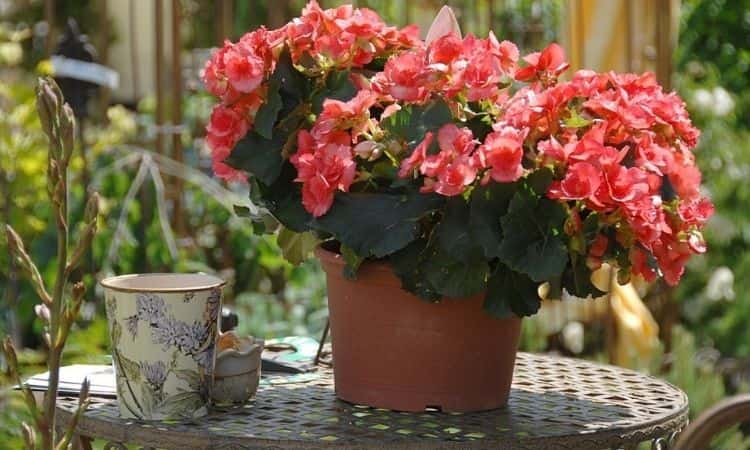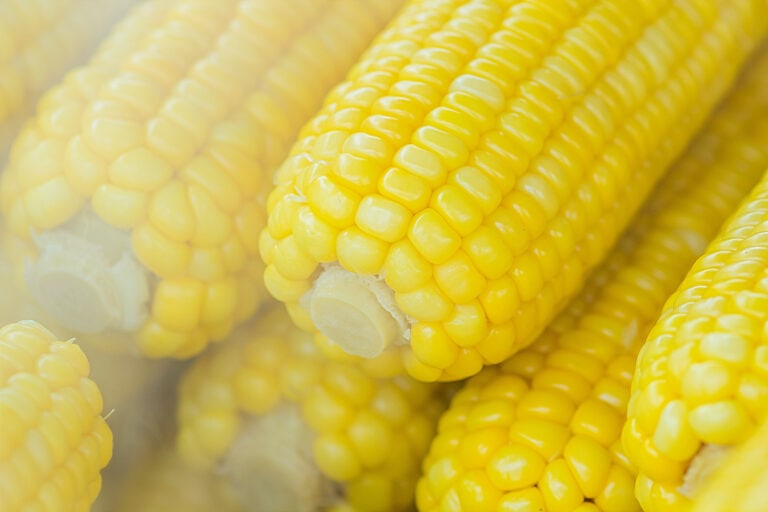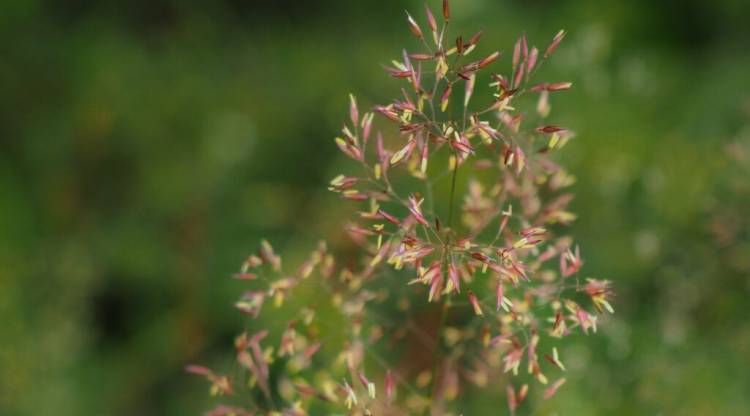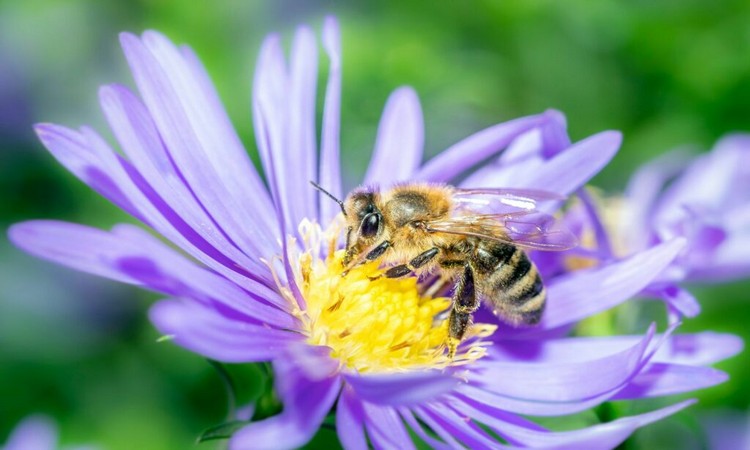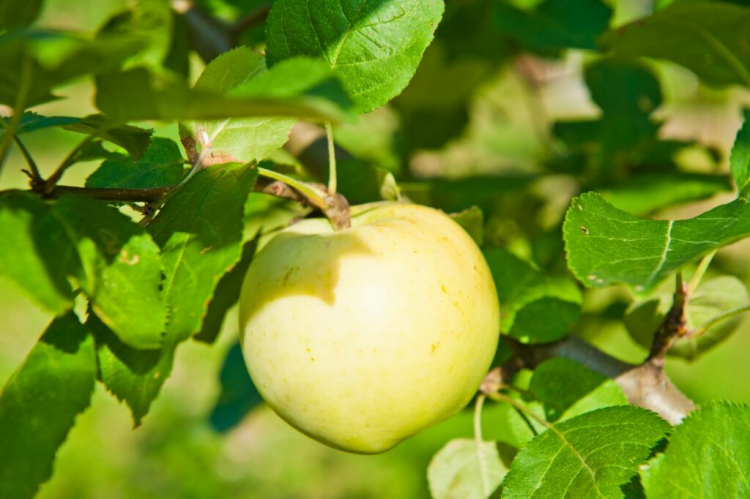Begonia: Expert Tips For Planting And Care
Begonia produces splendid flowers when cared for properly. Here you will learn everything about planting and caring for begonias with tips for extra-long flowering.
Surely you have heard of the Begonia with its crooked leaves. And you have probably seen the plants many times or even owned a begonia yourself. But do you already know the diversity of this plant genus, which is one of the most species-rich in the world? Let yourself be surprised and dive into the world of begonias.
Begonia: Origin and characteristics
Table of Contents
For a long time, the begonia was considered old-fashioned and dusty. In recent years, however, the versatile begonias have been rediscovered and their stylishly patterned leaves now adorn even many a student apartment. You can get a wonderful impression of the diversity in the world of begonias in the gardens of Hohenheim Palace. The greenhouses of the university near Stuttgart are home to one of the world’s largest begonia collections with over 250 different species.
If you take a closer look at a begonia leaf, you will quickly discover the most important of the begonias’ distinguishing features: The leaf is not symmetrical. The species-rich genus of Begonia belongs to the slanting leaf family (Begoniaceae).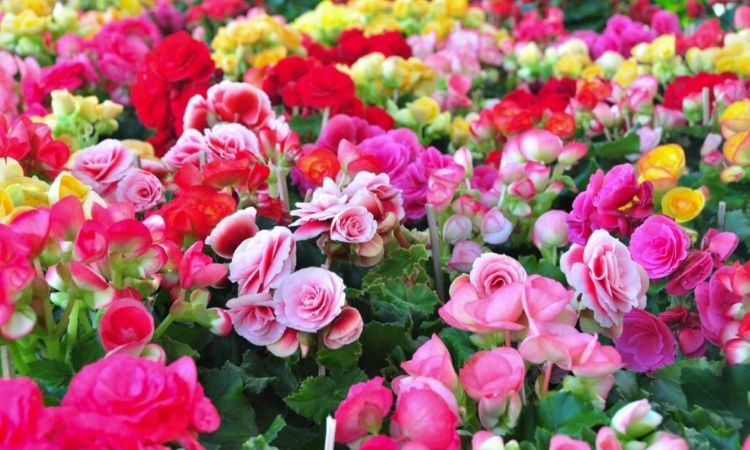
Only one other species is a member of this family, so you can be relatively sure that you are looking at a begonia with fleshy leaves and stems. The begonias originate mostly from the humid rain and mountain forests of the tropics and subtropics and are especially common in South America.
Unfortunately, for this reason, they are not able to withstand our Central European winters, even though they are actually perennial. But it is worthwhile to spend the winter because their flowers are a true splendor. The only shortcoming of these interesting plants: the flowers only smell with very few species.
Begonia species and varieties
Begonias include more than 1000 different species and new ones are constantly being discovered. But only some of them can be found as ornamental plants in our country. Nevertheless, the offer in this country is enormous and ranges from begonias with particularly impressive foliage to small-flowered begonias and begonias with magnificent, large flowers. We have collected the most beautiful begonia species and varieties for you in this article.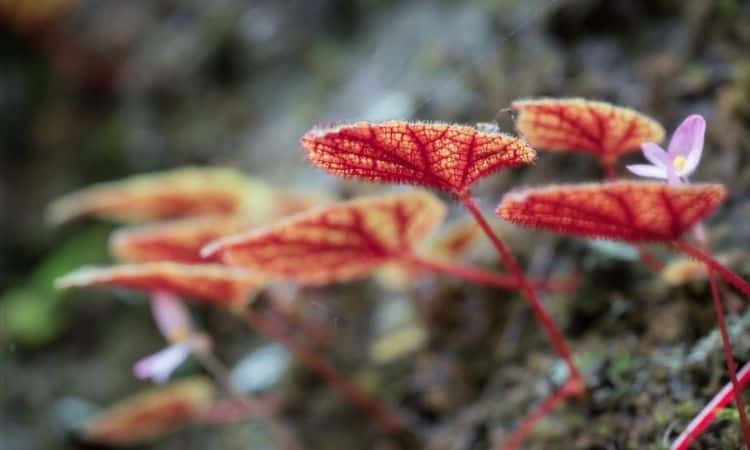
Winter frosty begonia varieties
Begonias are not accustomed to minus temperatures from their countries of origin. Only a few types like the Japanese slanting leaf (Begonia grandis) survive with the right protection also the cold season outside. More about two frosty begonia varieties can be found in this article.
Ice begonias
Ice begonias (Begonia semperflorens) are a true flowering wonder. Their bright colors appear from April or May and last until the planet freezes to death in winter. If you keep the plant in a pot and winter it indoors, it will be happy with its flowering pleasure even during the winter. More information about the Ice Begonias and selected varieties can be found here.
Elatior begonia
A colorful bunch is the Eliator begonia (Begonia x hiemalis). They are a group of hybrids of different begonia species and are extremely flowering. Since they quickly become too cold below 16°C, they are the perfect houseplants. Often the beautiful flowers are doubled in different colors. If you are interested in these refreshing houseplants, you can learn more about Elatior begonias here.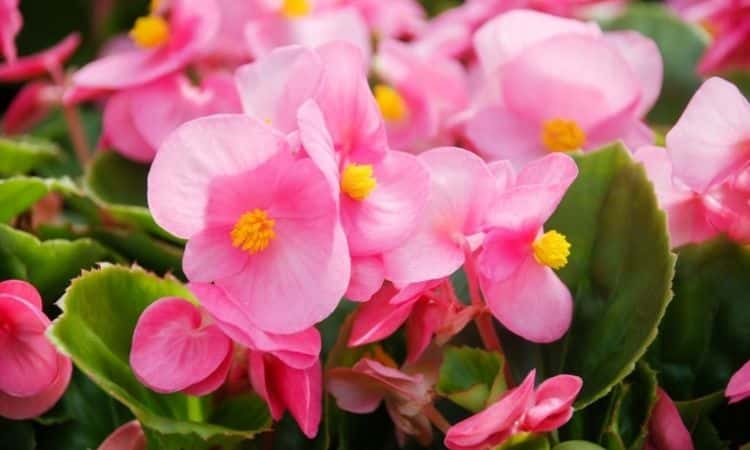
Buy Begonias
The most difficult thing about buying begonias is deciding on the right variety – everything else is usually found by itself. To make sure you don’t make any mistakes when buying a begonia, we have summarized the most important things to consider when buying a begonia.
Planting begonias
As plants of tropical forests begonias are relatively sensitive to sunlight. However, Eisbegonien likes it quite also sunnier. The basic requirement for a successful planting is therefore that you place the Begonia in a suitable place. Some of the plants would rather not be planted outdoors, but are only suitable as indoor plants in this country. With most other species, it is important to remember that they too cannot tolerate frost and must be dug up again for wintering.
For planting begonias, use nutrient-rich garden soil, preferably with a good proportion of compost. You can find out what else you need to know when planting begonias here.

Begonias multiply
The propagation of begonias works quite simply by using cuttings. Cut off an approximately ten-centimeter long shoot of the plant. If you want to grow several cuttings at the same time, it is best to sacrifice an adult plant. Then the plant is gone, but many of its offspring will sprout again. Remove the leaves from the cut-off shoot in the lower part, so that only two leaves remain at the top of the shoot. Now you can put the cutting into a prepared container with garden soil.
Make sure that the soil does not have a pH value above 7 and that it is always moist. It should be neutral or slightly acidic. Alternatively, you can also grow the cuttings in a darkened water glass and plant them later. In a bright place at room temperature, begonias root extremely fast, usually within a week. The best time to cut the cuttings is after flowering, which is difficult for some species, such as the Ice Begonias because they almost always flower. But in principle, cuttings can be grown all year round.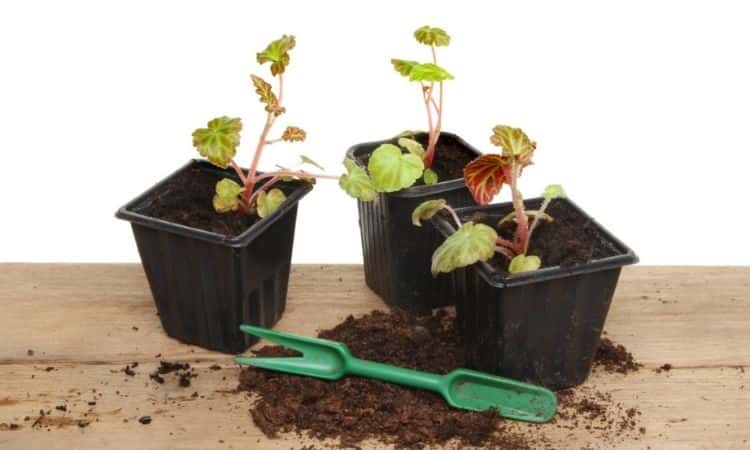
Leaf cuttings can also be easily taken without having to clear a whole plant. This works best for species with fleshy leaves. Cut off individual leaves from the mother plant and place them in a prepared planter. It is recommended to put a transparent plastic bag over the plant to increase the humidity. Here you can find instructions for building a mini greenhouse.
Begonias propagate at a glance:
cutting:
- After flowering or possible all year round
- Cut approx. 10 cm long shoots (shorter shoots are also possible with small species)
- Remove lower leaves
- Stick the shoot into damp earth or darkened water glass
- Rooting in a warm place within a few days
Leaf cuttings:
- Especially suitable for fleshy species
- Cut off single leaves from a mother plant
- Put the leaf in a container with damp earth
- Put a transparent plastic bag over it to increase humidity
- Place in a warm place
Pitch:
- Tuber division of the tuber begonia
- After hibernation divide the tuber into two halves
- Plant out tuber parts
Care for begonias
Begonias prove to be very grateful and easy to care for. So you don’t have much effort with these versatile plants. Begonias even clean themselves by simply dropping dead flowers. Cutting back is also unnecessary with begonias. You can only use garden shears shortly before wintering.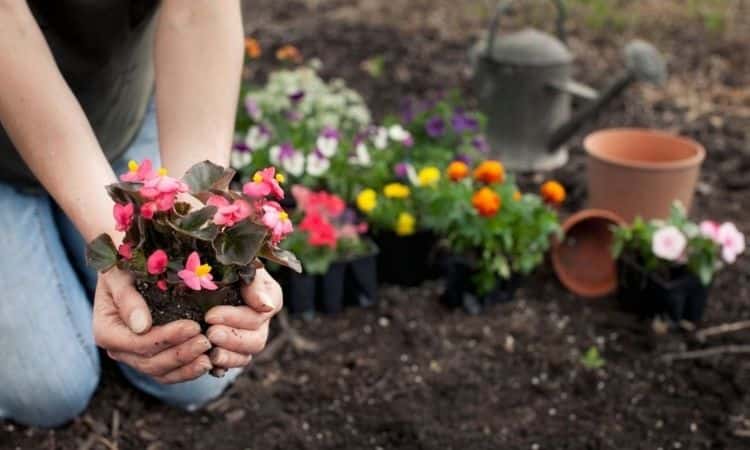
Watering begonias properly
Water the tropical begonias regularly, about twice a week. Sometimes it is difficult to find the right balance between too much and too little. Especially on hot days, this becomes a little challenge because waterlogging can quickly lead to root rot. Also, keep in mind that plants evaporate more water when there is a lot of wind and therefore need more water under these conditions. Only in winter should you water significantly less. With tuberous begonias, you can even do without watering completely after pruning over the winter.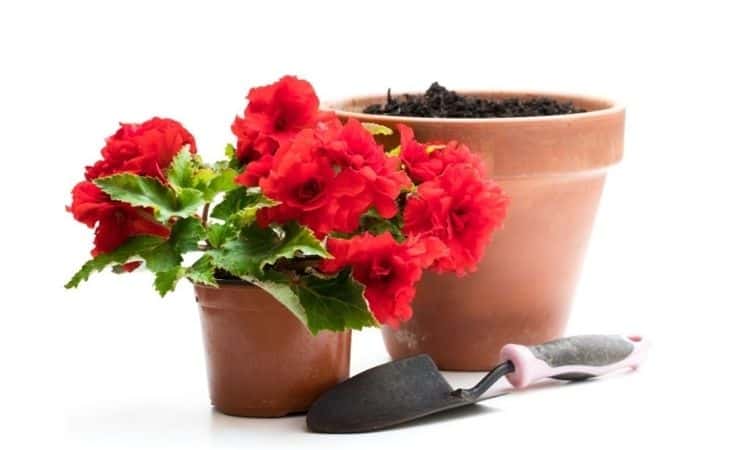
Fertilizing begonias correctly
To produce many flowers, begonias need sufficient food. From spring onwards, you can regularly apply a liquid begonia fertilizer. It is better for the environment and far less costly to apply manure, compost, or organic slow-release fertilizer in spring and early summer. From late summer onwards, you should stop fertilizing slowly, because begonias do not need fertilizer during the winter.
You Might Also Like Flowers That Start With B
Begonias overwinter
Begonias are not annual, although unfortunately they often end up in the compost in autumn. Most begonias are even quite easy to bring over the winter. Tuber begonias, for example, only need a cool room without frost – it doesn’t even need to be light. Most indoor begonias, such as Eliator begonias, can be kept indoors for the winter. Even Ice begonias winter quite well in a bright room at about 16°C. More details on how to successfully winter your begonia can be found here.
